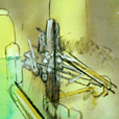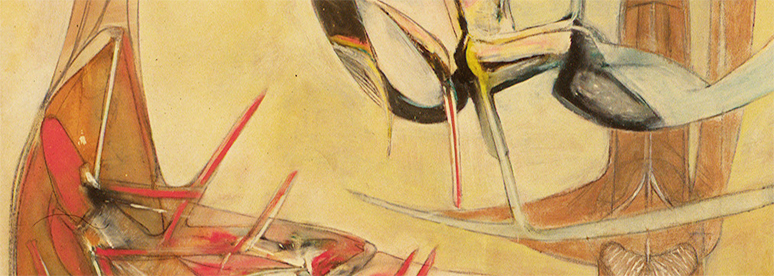PAST EXHIBITION

Roberto Matta: An Architect of Surrealism
November 19, 2003 – March 7, 2004
ABOUT THE EXHIBIT
Born in Santiago, Chile to Basque parents in 1911, surrealist Roberto Matta is one of the most celebrated artists of the 20th century. Matta became interested in architecture at young age, studying at the Universidad Católica in Santiago in his early twenties, and working in the Parisian office of the great French architect Le Corbusier.
He soon became acquainted with Salvador Dali and André Breton, who invited him into the Surrealist group in 1937, having been impressed by his drawings. He soon began to paint, taking some influence from Marcel Duchamp’s explorations of movement and process. With the outbreak of WWII in 1938, Matta considered the number of anti-Stalin and anti-Hitler papers he had signed and was left with little choice but to leave Europe.
In 1940, Matta held his first solo exhibition at the Julien Levy Gallery in New York. It was during his time in New York (1938-48) that Matta associated with young American artists Arshile Gorky, Robert Motherwell, and Jackson Pollock. Matta’s ideas on the Surrealist technique of automatism, in which the artist suppresses conscious control over the hand, allowing the subconscious mind to determine the fate of the painting, had a profound impact on this new generation of American painters. Valerie Fletcher of the Hirshhorn Museum writes of this period in Matta’s career as one in which he “created incredible images of cosmic creation, upheaval, and destruction… ranging from lyrical visions to frightening apocalypses, Matta’s paintings of the 1940s suggest a vast nether world of emotional and erotic tumult.”
The permenant collection of AMA | Art Museum of the Americas contains 14 pieces of Matta's.

